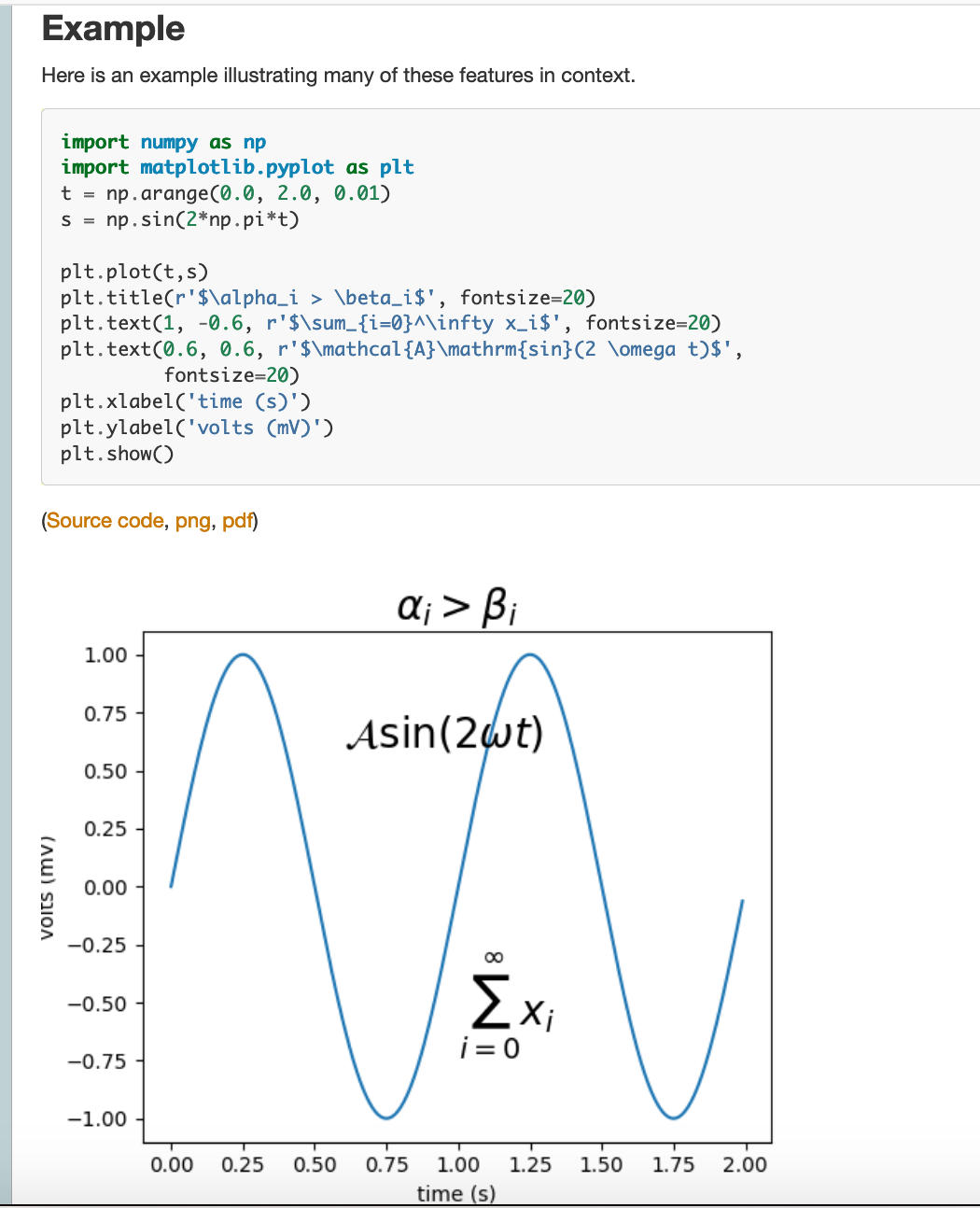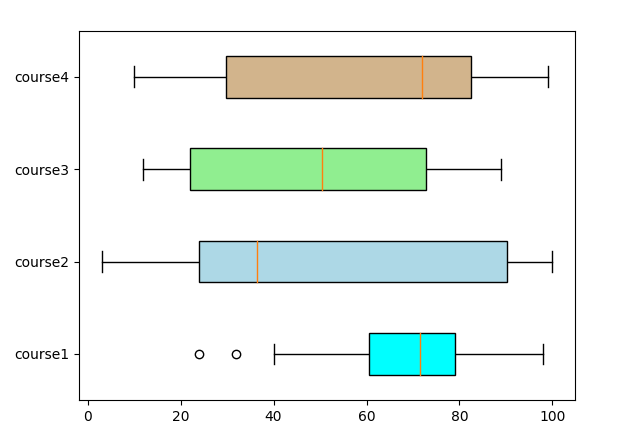Documentation:
http://www.univ-irem.fr/videos/
https://docs.python.org/3/
Tutorials (learning Python):
https://realpython.com/
Basic examples :
- Write a program that shows the current date and time
import datetime x = datetime.datetime.now() print(x)
- Write a script that sums up numbers
x = 10.1 y = 2 z = 3 s = x + y + z print(s)
- Write a conditional block :
message = "hello there"
if "hello" in message:
print("hi")
else:
print("I don't understand")
- Define a function:
def cube_volume(a):
return a * a * a
- The input halts the execution of the program and gets text input from the user. The input function converts any input to a string, but you can convert it back to int or float:
experience_months = input("Enter your experience in months: ")
- The input halts the execution of the program and gets text input from the user. The input function converts any input to a string, but you can convert it back to int or float :
experience_years = int(experience_months) / 12 print(experience_years)
- You can format stringswith (works both on Python 2 and 3):
name = "Thomas"
experience_years = 1.5
print("Hi %s, you have %s years of experience." % (name, experience_years))
- Define a function that converts Celsius in Kelvin :
def celsius_to_kelvin(cels):
return cels + 273.15
- Loop using a function to obtain several results :
for letter in 'abc':
print(letter)
monday_temperatures = [9.1, 8.8, -270.15]
for temperature in monday_temperatures:
print(celsius_to_kelvin(temperature))
-
- An *args parameter allows the function to be called with an arbitrary number of non-keyword arguments:
def find_max(*args): return max(args) print(find_max(3, 99, 1001, 2, 8))
Output: 1001
- An **kwargsparameter allows the function to be called with an arbitrary number of keyword arguments:
def find_winner(**kwargs):
return max(kwargs)
print(find_winner(Andy = 17, Marry = 19, Sim = 45, Kae = 34))
Output: Sim
- Use Dictionary – A dictionary is a collection which is unordered, changeable and indexed. In Python dictionaries are written with curly brackets, and they have keys and values. No duplicate numbers
thisdict = {
"brand": "Ford",
"model": "Mustang",
"year": 1964
}
print(thisdict)
y = thisdict["model"]
print(x)
y1 = thisdict[0]
print(y1)
- Loop over dictionary keys, values and both keys and values:
-
phone_numbers = {"John Smith":"+37682929928","Marry Simpons":"+423998200919"} for value in phone_numbers.keys(): print(value)for value in phone_numbers.values(): print(value)for key, value in phone_numbers.items(): print(key, value) - Use List – A dictionary is a collection which is unordered, changeable and indexed. In Python dictionaries are written with curly brackets, and they have keys and values.
thislist = ["apple", "banana", "cherry"]
print(thislist[1])
print(thislist[0:3])
- While loops with break statement we can stop the loop even if the while condition is true, Exit the loop when i is 3:
i = 1
while i < 6:
print(i)
if i == 3:
break
i += 1
i = 1
while i < 6:
print(i)
i += 1
File Processing
Example d’Algorithme simple,
n = 4
res = n – 4
res = res *4
res = res + 4
print (res)
faire tourner pour n compris entre 0 et 5 et observer les resultats la suite -4, 0, 4, 8, etc…
How to Launch MAC console :
$ ipython --pylab
Modules of Interest:
Third-party librariesare packages or modules written by third-party persons (not the Python core development team).
Third-party libraries can be installedfrom the terminal/command line:
Windows:
pip install pandas
Mac and Linux:
pip3 install pandas
Statistics
https://docs.python.org/3/library/statistics.html
How to build histograms:
https://realpython.com/python-histograms/
Data analysis and Vizualization
use interactive python:
$pip install ipython
$pip install numpy
$ python –m pip install –U matplotlib
Tutorials – Examples
PIE
https://matplotlib.org/gallery/pie_and_polar_charts/pie_features.html#sphx-glr-gallery-pie-and-polar-charts-pie-features-py

BOITE a moustache
Writing mathematical expressions
https://matplotlib.org/users/mathtext.html

https://matplotlib.org/users/index_text.html
https://matplotlib.org/users/annotations.html#annotating-with-text-with-box

Book
https://learning.oreilly.com/library/view/python-for-data/9781449323592/ch03.html
https://learning.oreilly.com/library/view/python-for-data/9781449323592/ch08.html
